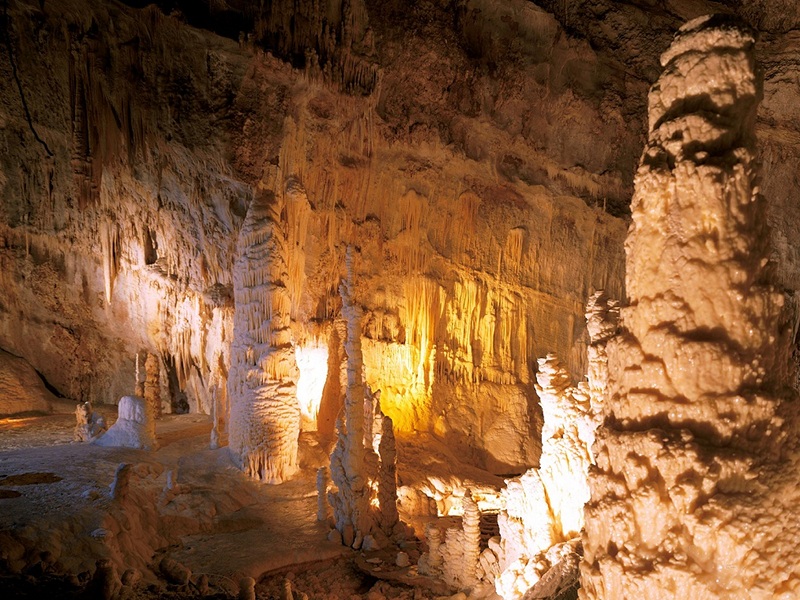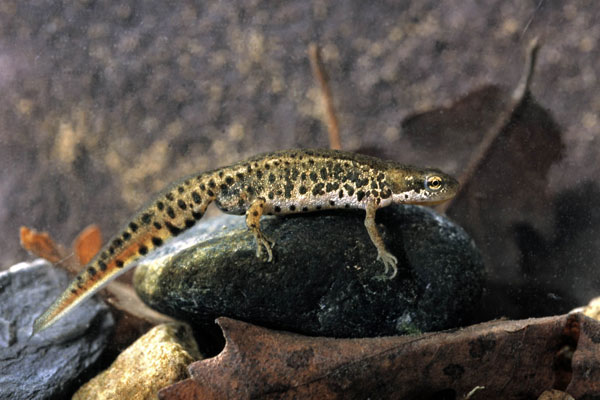-
Sylvhia.
User deleted
The Frasassi Caves

The Frasassi Caves, the discovery of which dates back to September 25, 1971 by a group of Ancona CAI Speleological led by Giancarlo Cappanera, are underground karst caves located in the municipality of Genga, in the province of Ancona. The cave complex is located within the Regional Natural Park of Gola della Rossa and Frasassi.
In the 1950s and 1960s, before the discovery, groups of the CAI (Italian Alpine Club) of Jesi and Fabriano explored the cavity of the area, including, in 1966, a branch over 1 km long that starts from the Grotta del Fiume (The River Cave)
In July 1971 a group of 7 explorers from Jesi was attracted by a strong air current escaping from a small opening. After expanding the size of the passage (later called the Woodworm Bottelneck - Strettoia del Tarlo - ) to make it viable, the explorers found themselves in a dense network of tunnels, trenches, pits and caves 5 km long.
The Large Cave of The Wind
The first track of the most important discovery, the Large Cave of the Wind, dates June 1971, when Rolando Silvestri and Umberto di Santo, climbing the north slope of Mount Valmontagnana, discovered a narrow entrance. On September 25, 1971, Rolando Silvestri, during the expedition of Ancona CAI led by Giancarlo Cappanera, found again that opening in the mountain from which came a strong jet of air, and that led to the front door of the cave, which was immediately named Grotta Grande del Vento (Large Cave of The Wind).
This large cave was in total darkness and equipment existing at that time did not allow the discoverers to go down to the base of the cavity below, and thenthe height of the cave was estimated by throwing a stone and measuring the time of fall. A first approximate calculation led to the unexpected height of over 100 m. Subsequently, the explorers were equipped with appropriate equipment and explored the immense space, which was called "Ancona Abyss" in honor of the discoverers of the city. The news of the discovery was spread through the press, and it is from this moment Frasassi Caves became famous.
The discoveries followed one another over the years and a number of other more or less accessible areas were discovered and explored by cavers. At the moment the cave complex Frasassi has a length of over 13 km. Beyond the Abyss Ancona, are known the "200 Room", so called because it is a corridor of 200 meters, the "Hall of Candles", which owes its name to the numerous small cylindrical stalagmites surrounded by a ring of rock that remind the candles on a saucer, the "White Room" whose color is due to several layers of pure calcite, the "Hall of the Great Bear" for a boulder present in it that has the vague shape of a bear, thanks to the thousands of years of water erosion , the "Hall of Haystack" and the "Infinity room", so named because it has a irregular circular shape and during the early exploration cavers lost their way and found themselves in go around the room several times before finding an exit, as if they were in an infinite path.
http://imgcdn.geocaching.com/cache/large/6...ad30aa8bec7.jpg
Inside the Frasassi Caves there is, throughout the year, a constant temperature of 14 ° C and a relative humidity close to 100%.
Stalactites and stalagmites
Within the Karst caves it is possible to admire the natural sculptures, formed by layers of limestone over 190 million years thanks to the work of water and rock. The water, conveying the carbon dioxide in the limestone, create a chemical process that gives rise to calcium hydrogen carbonate, a salt that exists only in solution [(H2O + CO2 + CACO3 = CA (HCO3)]. Such a phenomenon determines the transfer of small amounts of calcium carbonate from place to place and, in the course of a trickle that lasts millennia, ends to form concretions of considerable size and shapes completely random and sometimes even curious. Concretions are divided into stalagmites (columns that grow progressing from bottom to top) and stalactites (hanging from the ceiling of the cavity)
The shapes and sizes of these natural works stimulated the imagination of the cavers, who "baptized" calling them in an interesting way. Among the stalactites and stalagmites most famous include: the "Giants", the "Camel" and the "Dromedary," the '"Great Bear" (a mass of which is discussed above), the "Madonna", the "Sword of Damocles "(the biggest stalactite, 7.40 m high and 150 cm in diameter), the" Small Niagara Falls ", the" Slice of bacon "(light pink) and the" Slice of lard"(completely white, because of calcite), l '"Obelisk" (stalagmite 15 meters high at the center of the room 200), the "Organ Pipes" (taper-laminated concretions that owe their name to the fact that if you are affected resonate outside), the "Castle of the Witches."
Inside the caves are also present ponds of stagnant water oozing and 'sinks', cylindrical cavities at depths of up to 25 m that can collect water and convey it to the below karst plains.
In the caves natural lightat does not penetrate any point, so the lighting is completely artificial and uses only white cold lights , that does not produce heat towards the concretions (as already mentioned, the temperature is constant). The only lights not of this type are those blue used to highlight the wells and ponds.Grotte di Frasassi - Fracassi Caves
by Giovanni VagnarelliFauna
 (Speleomantes Italicus)
(Speleomantes Italicus)
Overall, the caves have been counted no less than 67 species of animals, some of which are endemic to this underground ecosystem . (Salamandrina Tergiditata)
(Salamandrina Tergiditata)
There are dozens of different species of bats, with a colony of over 12,000 Miniopterous. Among the amphibians are reported to the Speleomantes italicus, the salamander terdigitata and theLissotriton italicus. (Lissotriton Italicus)
(Lissotriton Italicus)
Among invertebrates deserves a mention the presence of Niphargus , a small troglobite crustacean that lives in pools of sulphurous water, and at least two other species of the genus Niphargus (N. frasassianus, N. montanarius).
Inside the caves of Frasassi scientific experiments of chronobiology are carried out . Among cavers who have spent more time inside the caves we remember Maurizio Montalbini.
http://it.wikipedia.org/wiki/Grotte_di_Frasassi.
The Frasassi Caves - (Le Grotte di Frasassi)01 Settembre 2014 |


